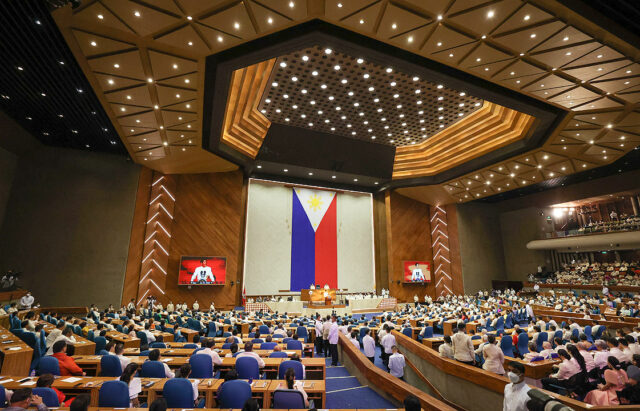LIVING in Moscow in the 1990s, I recall watching an after-dinner skit that a Russian acquaintance would perform. Standing next to a big pink wall map of the recently departed Soviet empire, she’d tap on Russia’s new neighbor states with a stick and then bark like a slightly unhinged school teacher: “Vot! Nashi!” (Here! Ours!), “I vot! Nashi!” (And here! Ours!), thwacking each ex-republic in turn, before moving on to Alaska, California, and beyond.
She was, of course, mocking the country’s neo-fascist nationalists, who had formed a group called, you guessed it, Nashi. It seemed funny at the time, but less so in retrospect.
This was 1993, the year Harvard professor Samuel Huntington published his controversial Foreign Affairs essay, “The Clash of Civilizations?” predicting that the world wouldn’t adopt Western values, but instead divide and fight along religious and cultural lines. I’d already encountered nationalists and cosplay-Cossacks fighting with pro-Russia separatists in Georgia and Moldova, but they were on the outs with the Kremlin. Yet by 2014, President Vladimir Putin would adopt their ideas, annex Crimea and invade Ukraine.
Western leaders need to better understand Russia’s motivations in its so-called near abroad, if they’re to read Putin’s approach to ending the conflict in Ukraine correctly. We’re naturally solipsistic, assuming that everything revolves around us. And that’s before you get to the pure narcissism of former US President Donald Trump, who again in a recent podcast insisted that had he still been in the White House in February 2022, Putin would never have invaded Ukraine, because, well, he’s Trump — and Hamas wouldn’t have dared attack Israel, either. The root of the problem, he said, as do Putin and too many others, was NATO’s provocative decision to let new members join from the former Soviet bloc.
Putin clearly was angered by NATO expansion. Yet the important questions here are why, and whether Russia still would be invading its neighbors if NATO didn’t exist. The answer to the last part is of course a counterfactual, but most evidence points to yes, because this isn’t primarily about us. It’s about Russia.
In the 1990s, Nashi looked like dinosaurs, but Russia’s nationalists were right about one thing: The 1991 Soviet breakup marked only the beginning of a contested imperial collapse, not its end. The country was just embarking on a process of figuring out what it meant to be Russian, not reverting to some imagined universal, but in fact Western, norm. Russia had never before been a Westphalian nation state. The new post-Soviet borders seemed unnatural, and not just to ex-KGB agents like Putin. Very few Russians I met in the 1990s thought Ukraine was a real country, nor Belarus, or indeed Kazakhstan.
It took a while for the Kremlin to fully articulate what being a post-Soviet Russian should mean and to find a label for this ambiguity about where the country ended. Putin started defining Russia as a “state-civilization” (as opposed to a mere nation state) around 2012, but it became a fully developed doctrine in the 2023 edition of “The Foreign Policy Concept of the Russian Federation.” That document declares “the special position of Russia as a distinctive state-civilization,” responsible for all peoples within the “Russian World.”
This idea is key to setting expectations as to the circumstances in which Putin might make peace in Ukraine and for how long. It’s also important for remembering that Russia has never been just a victim responding to threats, but has pursued its own agenda of expansion and transformation, which it sees as positive.
This is why Putin responded so aggressively in 2013 to Ukraine’s decision to sign a trade and association pact with the European Union — the deal threatened to thwart his plans for Ukraine. At the time, NATO membership wasn’t on anyone’s agenda, or even possible for Ukraine, whose constitution forbade joining any military alliance. That block was removed only in December 2014, nine months after Putin annexed Crimea and long after he sent Russian troops and tanks to fight in Eastern Ukraine.
This way of understanding Russia as a state-civilization defined against the West is now being taught to the young, who can be more susceptible to Western ideals and culture. As of Sept. 1 last year, every student entering university in Russia has had to study a new mandatory course, called Foundations of Russian Statehood.
The core proposition is that Russia, as a state-civilization, is “heir to the thousand-year historical and political experience of all previous states that existed on the territory of our country: Russian land, Russian state, Russian kingdom, Russian empire, USSR.” Embedding this version of history is a huge project. It has included the appointment of vice-rectors as latter-day university Commissars, responsible for the ideological content of coursework, and sending almost 6,000 professors to “re-training” centers.
There’s also a new incarnation of the Communist-era Young Pioneers, called Movement of the First, which was rolled out in 2022 to teach collectivism to some 5 million kids, among other values deemed as traditional to Russia, in contrast to the individualistic decadence of the West. History textbooks in lower schools also have been culled and replaced by a handful of new approved titles.
The name Ukraine, Russia’s students are now told, was never a national or ethnic designation, but indicated an area of Russia’s border territories. And like so many empires before, Russia’s official texts portray a sometimes-genocidal history of expansion as a selfless burden, carried primarily by ethnic Russians on behalf of less civilized peoples.
Civilizations aren’t static and smaller countries and ordinary people can have agency. A large contingent of Ukrainian soldiers fighting invasion by what they often call Muscovy are Russian speakers from the East. On June 25, even as the war continued, Ukraine (and Moldova) began talks with the EU not just on trade but full membership, a choice you could describe as civilizational. The process involves adopting well over 100,000 pages of laws known as the Acquis Communautaire and would leave the two states looking more like Poland and Romania, and less like Russia.
Seen from the Kremlin, this contest is indeed existential, not because it fears NATO forces will attack across its internationally recognized borders, but because even the prospect of joining Western institutions encourages Moscow’s former possessions to resist the Kremlin’s expansion plans. And if Russia is to be not just a nation state but a great-power civilization, then losing the chance to control Ukraine means losing great power potential.
The problem Putin’s worldview poses for Ukrainian sovereignty is obvious. But it’s a problem for Europe, too, because it isn’t at all clear where Russia’s civilizational project ends or how the absorption of Ukraine might add to its ambition. The “Russian World” is both large and ill-defined. So what to do? Allow Putin to impose his “state-civilization,” or stop him in Ukraine?
Russia is hardly the first empire to resist the loss of long-held colonies, so there’s nothing unique about its attempt. But few would suggest the Hapsburg, Ottoman, British or French empires had a right to hold on to, let alone restore, their imperial claims, or that the desire to do so was “provoked,” or that the world would be better off had they been able to cling on.
Understanding Putin’s outlook is key to grasping that the “neutrality” and “demilitarization” he demands of Russia’s neighbors is not his end goal. It is a prerequisite for rebuilding Russia’s state-civilization and Moscow’s status as the beating heart of a great power. Every peace proposal for Ukraine needs to keep that fact front and center. And if a once and future President Trump wants to play the role of mediator, by all means. But he should start by reading the Kremlin’s new college textbook.
BLOOMBERG OPINION




















